With news of global warming and the earth’s imminent demise reaching unprecedented levels, cities are taking steps to introduce greenery into a landscape dominated by high-rise buildings and shopping complexes. While there are definitely parks already existing in every city, some of them are taking a further step and creating more unique parks for locals to enjoy.
Here is a list of seven parks around the world that are the result of an extensive urban greenery planning. Through revitalising old infrastructure, utilising current ones, or even creating land to build a park, these parks show how urban parks are changing the landscape for their cities.
1. The High Line, New York, United States
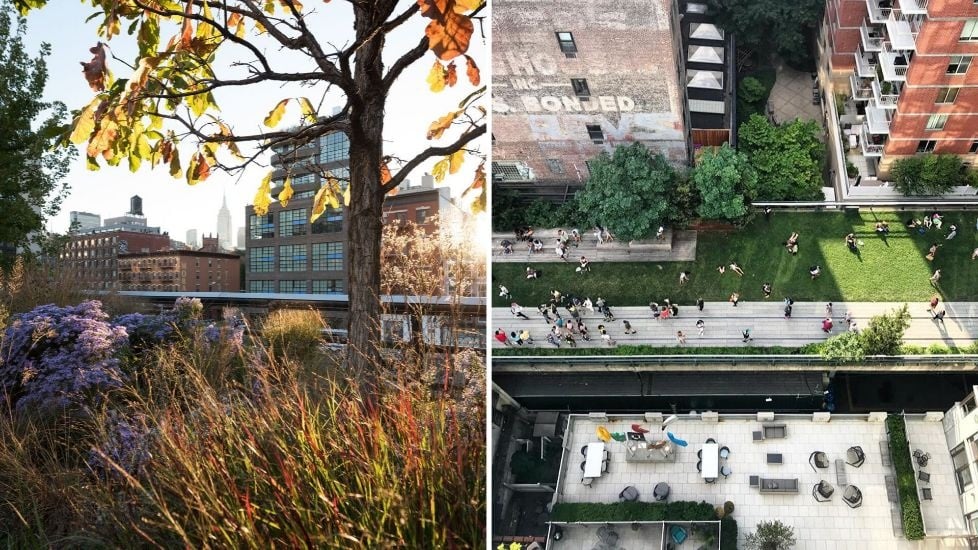
The High Line is situated on a 2.3km elevated railway line that went out of use a long time ago. Even though the railway has not been in use since 1980, it was only transformed into an urban park in 2009. Since its opening, the High Line has been well-received by the local population and becoming a New York cultural icon. The High Line is also the most famous urban garden project in the United States: in fact, it might even be the most famous in the world.
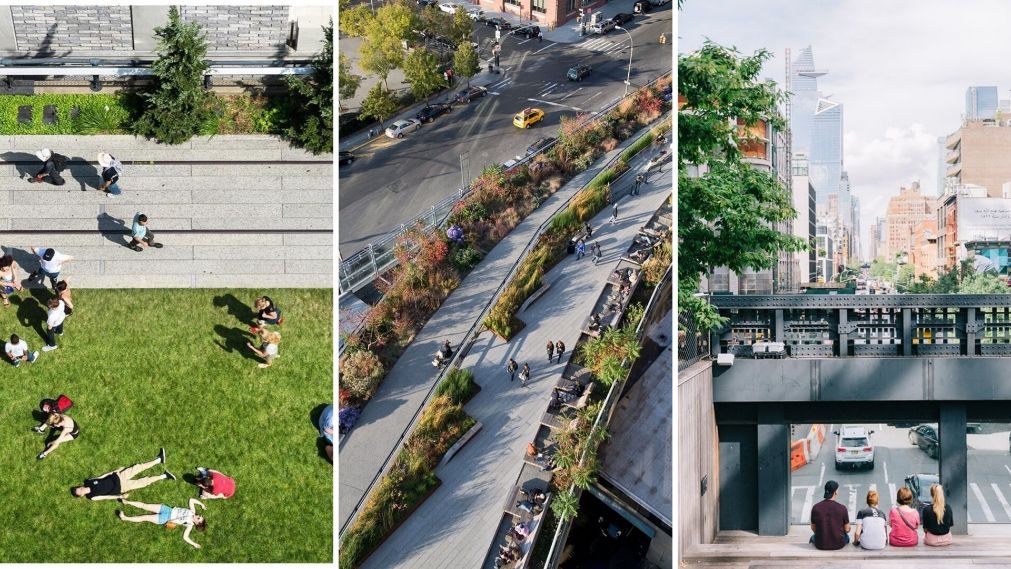
Image credit: The High Line (Facebook)
Compared to landmarks such as the Empire State Building and the Statue of Liberty, the High Line offers a respite from the bustling New York crowds. Located at the west end of Manhattan, the High Line is an urban space where visitors can enjoy nature, art, and design at the same time.
2. Gardens by the Bay, Singapore
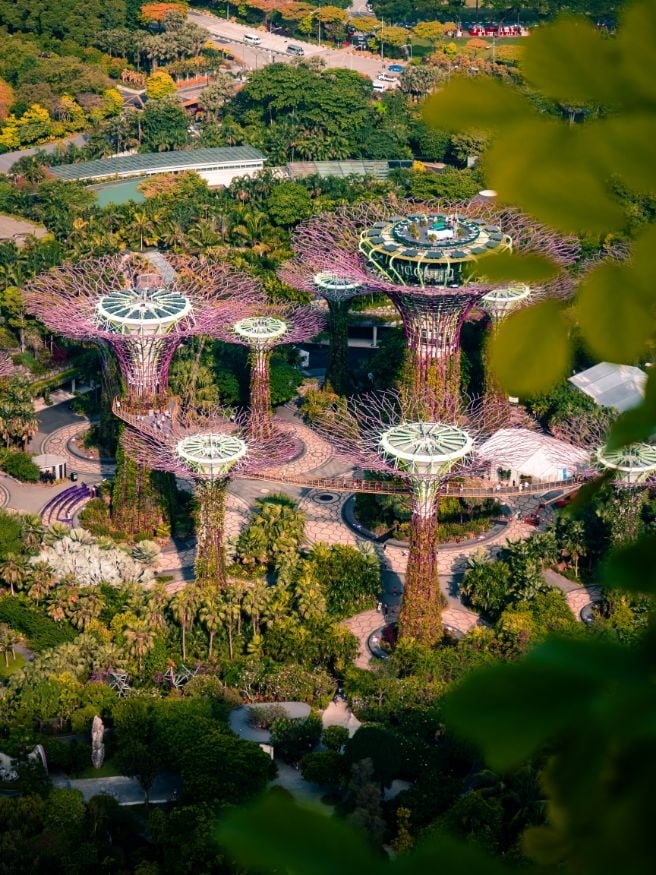
Image credit: Paul Wetzel (via Unsplash)
To enhance greenery and flora in the city, Singapore’s government built a large modern park on reclaimed land near the Marina Bay business district. Gardens by the Bay is Singapore’s largest urban park and one of the biggest attractions in the nation too.
The highlights of Gardens by the Bay are the two conservatories located right next to the waterfront. The Cloud Forest encompasses a 35m tall structure within a glass dome, as guests can ascend to the top and discover some tropical flora on their way down the structure. Next to the Cloud Forest is the Flower Dome, a floral wonderland housed inside an air-conditioned dome so guests can enjoy flower-watching in comfort. The Flower Dome has also been recognised as the biggest glass greenhouse in the world.
3. Namba Parks, Osaka, Japan
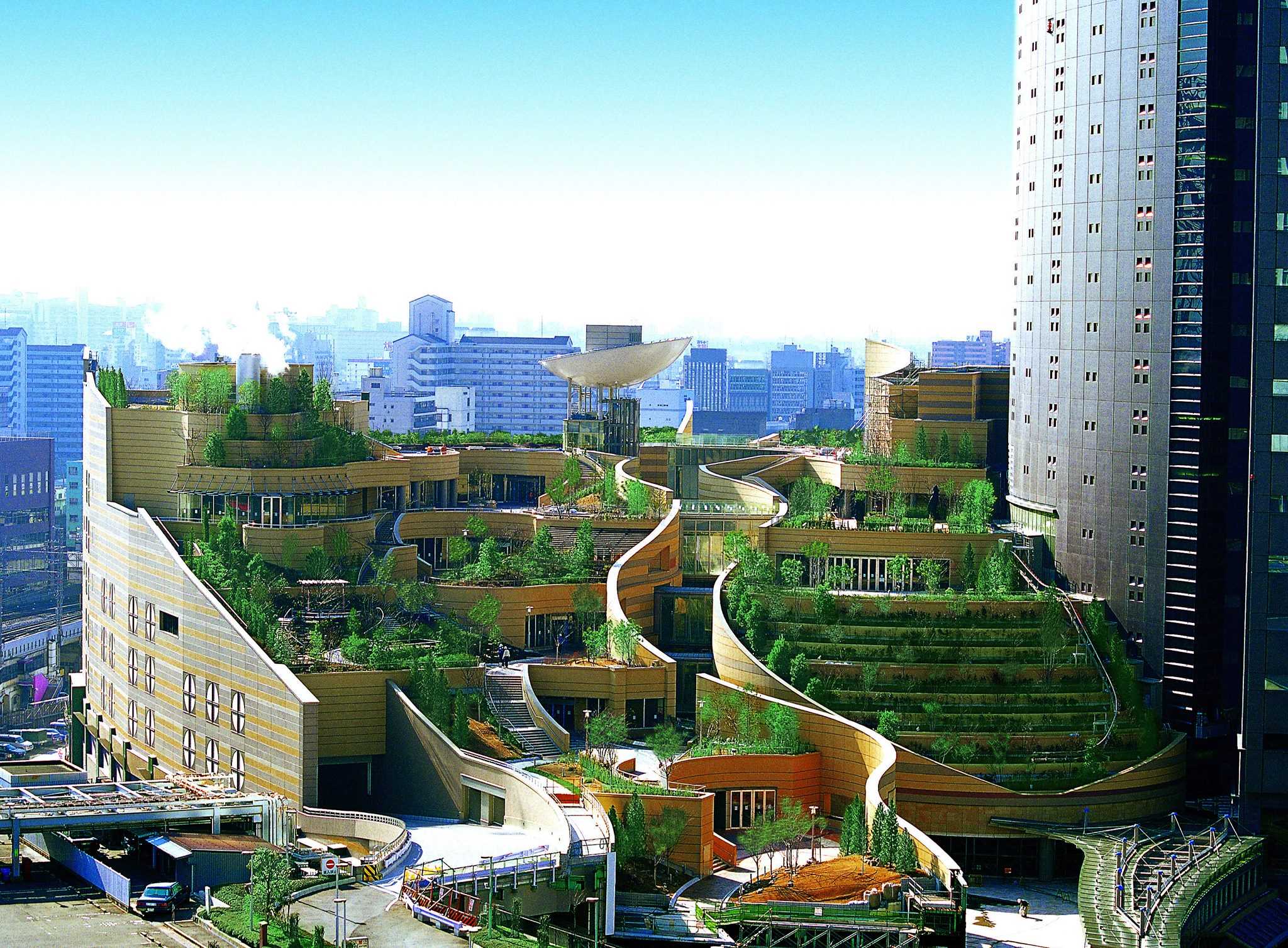
Image Credit: High Design Studios
Namba Parks is actually a massive shopping complex in the Namba region of Osaka city. Establishing itself as a new shopping destination, the complex has nine stories so guests can shop till they drop. Besides the huge amount of stores available in Namba Parks, the complex also has facilities such as a cinema and a rooftop garden.
To introduce some greenery into the surrounding concrete landscape, the terraces on Namba Parks have been designed as rooftop garden spaces. Guests can thus admire the greenery while taking a break from their shopping in Namba Parks. Designed by the same person in charge of Tokyo’s Roppongi Hills, Namba Parks looks like a canyon amidst two oases of greenery. This unique canyon design can be seen from every floor of the shopping complex.
4. Awaji Yumebutai, Hyogo, Japan
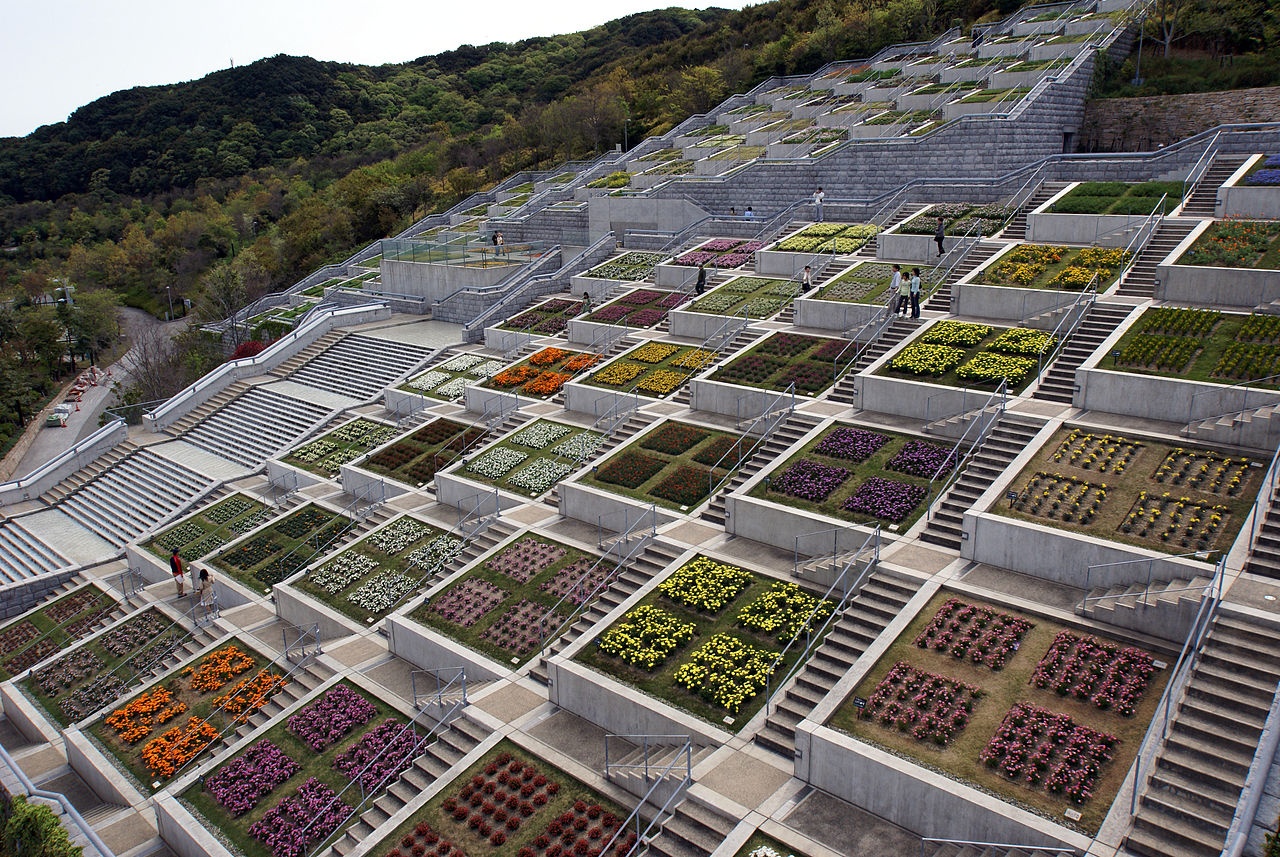
Image Credit: 663highland
Off the coast of Osaka Bay is Awaji Yumebutai, a building complex designed by the famed Japanese architect Tadao Ando. Awaji Yumebutai is built on the remaining plot of land left after most of it was used for the construction of Kansai International Airport. The highlight of Awaji Yumebutai is the ‘Hyakudanen’ (100 Stepped Garden) located at the highest point of the complex.
Made up of a hundred flower beds, the garden was actually built as a memorial to the victims of the 1995 Great Hanshin Earthquake. This symbolic garden is where locals come for a moment of contemplation and admiration for Tadao Ando’s minimalist design. For those coming by public transport, Awaji Yumebutai is only an hour bus ride from Kobe’s city centre.
5. ACROS Building, Fukuoka, Japan
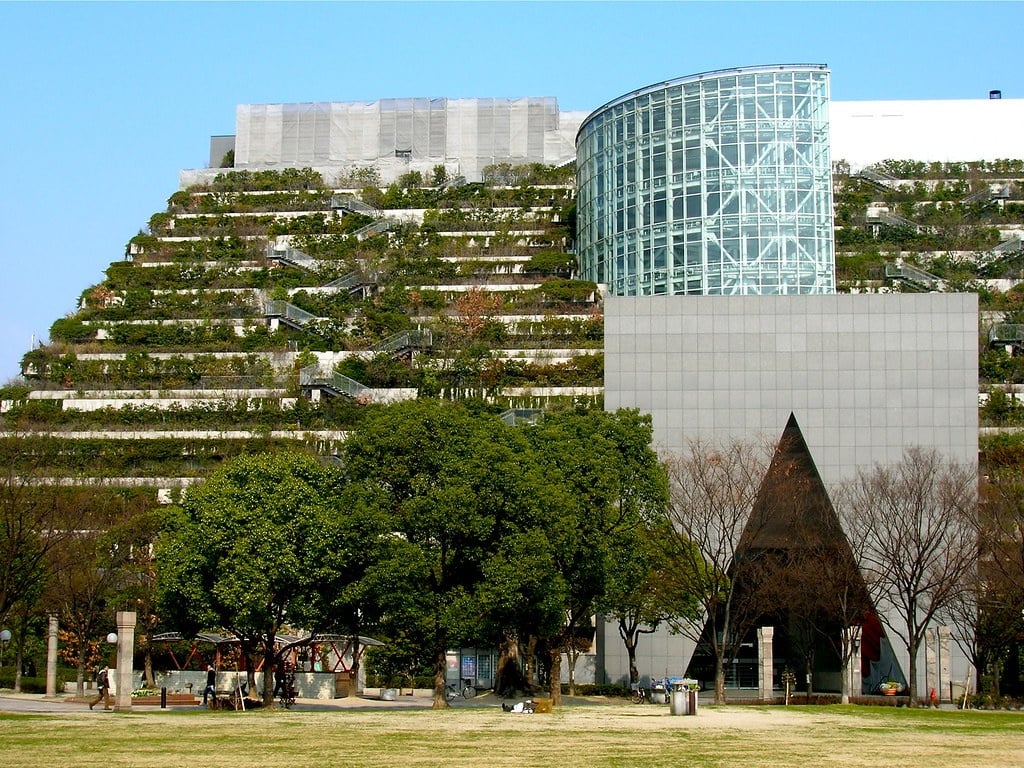
Image Credit: Jennifer Morrow
The name ‘ACROS Fukuoka’ might not be familiar even to the locals, but the building is easily recognisable due to its unique feature. One side looks like a normal office building in Fukuoka’s metropolitan skyline, overlooking the most prestigious street in its central district. The other side is a sea of green, as the building’s terraces are lined with gardens and connected to the adjacent central park.
ACROS Fukuoka is a display of how architecture can merge office spaces with nature, creating an urban oasis. ACROS Fukuoka is conveniently located within the city centre, so you can take a rest at the open space after shopping for a few hours.
6. Cheonggyecheon, Seoul, South Korea
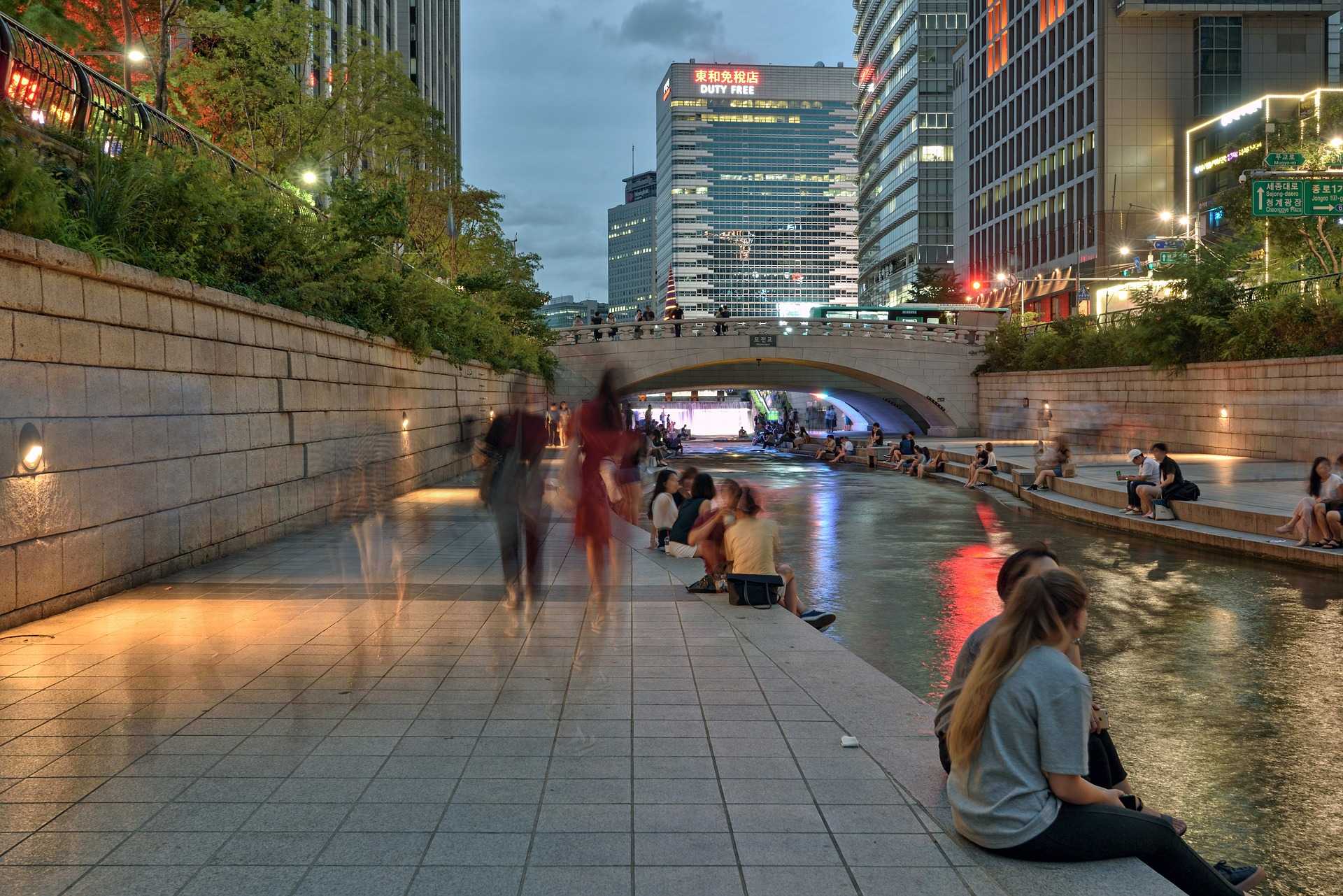
Image Credit: Jamesgraphy
At the heart of Seoul is Cheonggyecheon, an urban stream with a linear park along the sides. Once the site of a congested expressway, the stream has been transformed into a public park as part of the government’s urban revitalisation plans. This new 5.6 kilometre park stretches from Cheonggye Plaza, right in the middle of Seoul’s central business district, to the famous Dongdaemun Plaza.
Along the Cheonggyecheon stream are sitting areas for visitors to dip their feet into the clear water. On a hot summer day, local children head to the shallow portions of the stream to cool down. There are also events held regularly at Cheonggyecheon Plaza, making the area one of the most popular destinations for locals.
7. Seoullo 7017, Seoul, South Korea
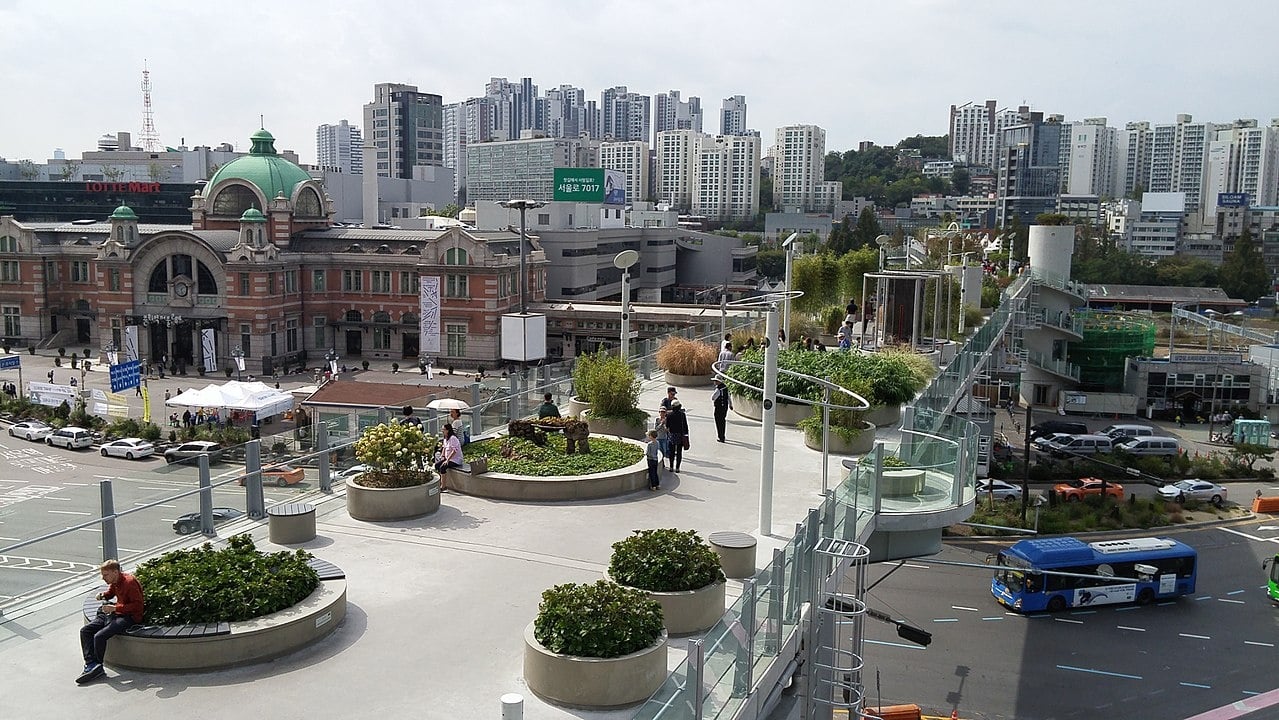
Image Credit: Christian Bolz
While Seoullo 7017 was once a driveway that connected the east and west side of the busy Seoul Station, it has now been transformed into an elevated walkway. Seoullo’s name is a reference to the year it was built as a driveway (1970) and the year it was refurbished and reopened as a pedestrian walkway (2017).
As part of plans to revitalise the area, Seoullo has been rebranded as a sky garden for the public to enjoy. There are over 20000 trees planted, on top of the many flower species and cafes along the 1 kilometre stretch. Besides the usual tourist spots of Myeongdong and Hongdae, do make a visit to Seoullo 7017 on your next visit to Seoul. Seoullo 7017 is also connected to Seoul’s biggest Lotte Mart at Seoul Station, so you can buy all your favourite Korean snacks as souvenirs.
8. Tåsinge Plads, Copenhagen, Denmark
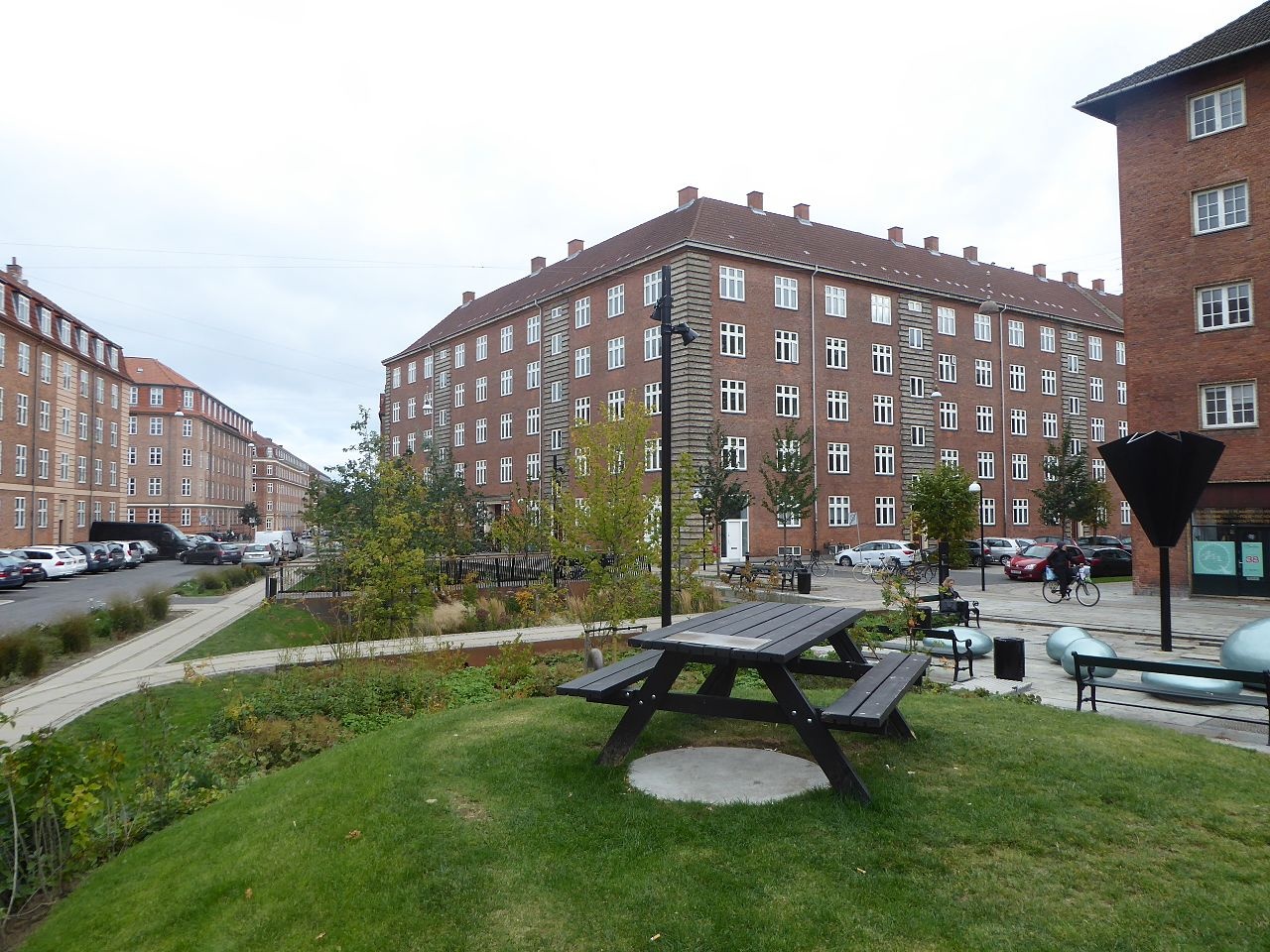
Image Credit: Leif Jørgensen
Before Tåsinge Plads was built, it was a piece of asphalt land that did not add beauty to its surroundings, nor did it solve any environmental problems the district faced. After a total makeover in 2016, Tåsinge Plads has transformed into an urban park with a purpose.
Besides being a place of recreation, the unique feature of the park helps to alleviate flooding in the area caused by high rainfall. The park’s vegetation acts as a natural water tank to collect excess rainwater. As children jump on the bouncy floor, it will activate the water pumps to direct water away.
Are these the future of city parks & green spaces?
A look at these eight urban parks shows how much can be achieved, as long as city officials put in the effort to revitalise and increase the amount of green space. Urban parks across the world help to redefine the notion of parks as a space for recreation, allowing more types of land spaces to be used and transformed into pieces of greenery.




